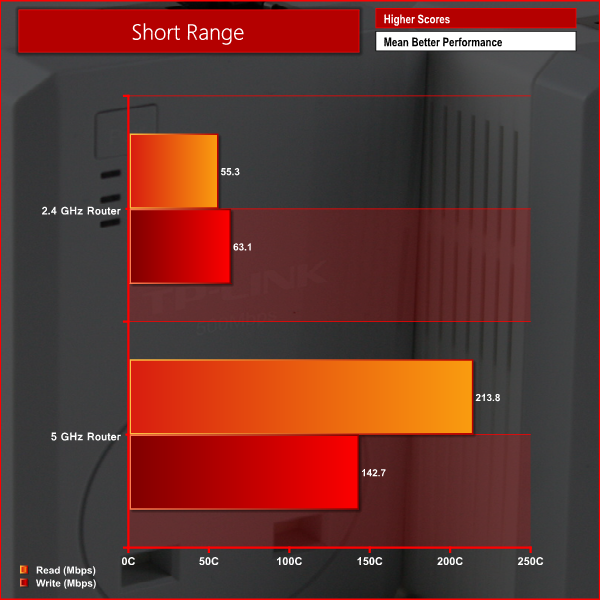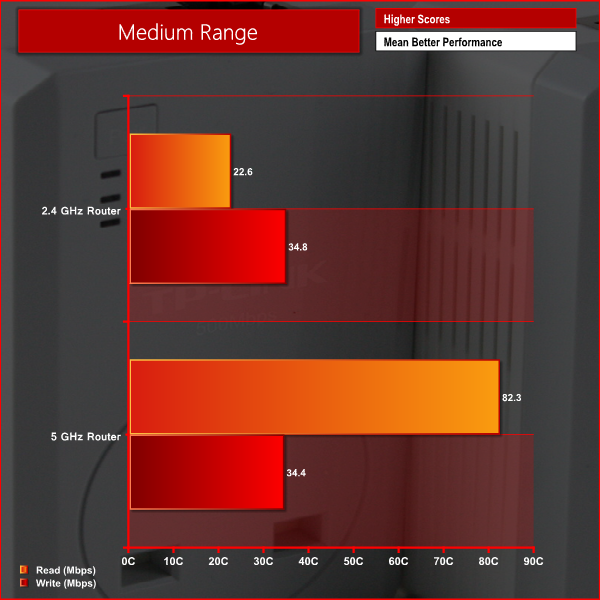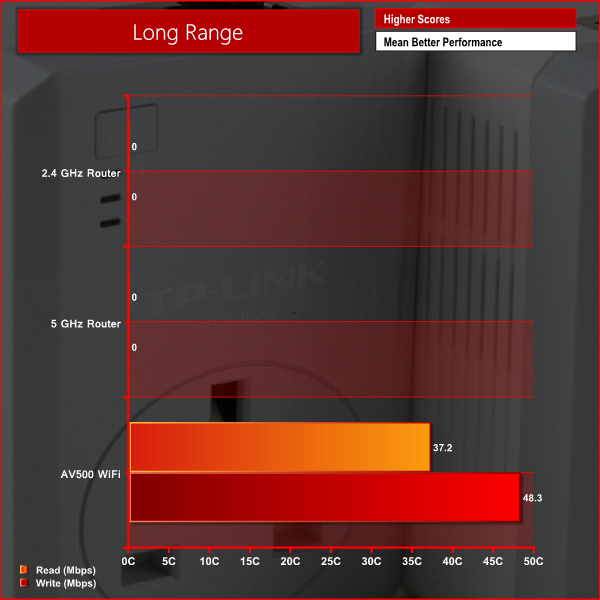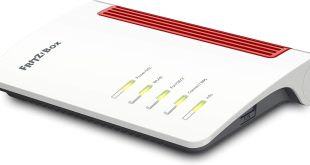To test the TP-Link Archer C9 and AV500 WiFI Range Extender Kit, we used Totusoft’s LAN Speed Test software to measure the real-world network throughput when transferring a 100MB file between a wired ‘server’ laptop and a wireless ‘client’ laptop. LAN Speed Test provides real-world performance results as it creates the file, measures the time taken to transfer it, and calculates the effective network throughput.
To eliminate potential bottlenecks, the ‘server’ computer was connected via Gigabit Ethernet to the TP-Link Archer C9. As we wanted to test wireless performance, the ‘client’ laptop was connected via the maximum supported speed on the 2.4GHz and 5GHz frequency bands.
It is important to point out that the walls in my home are very thick which does have a negative impact on a wireless signal.
We tested the performance of the router and range extender in three different positions:
- Short Range: Router positioned with the ‘client’ laptop three feet away, to show the best performance scenario.
- Mid Range: Range extender and laptop located 20 feet from the main Router on the floor below, with the signal passing through one solid wall.
- Long Range: Range extender located in the same place as the mid-range test, with the ‘client’ laptop located 15 feet further away through another solid wall.
In all three of the scenarios we recorded the performance connecting both to the router directly and through the range extender. We also tested these on both 2.4 GHz and 5 GHz bands.
As we can see from the graphs above, we experienced far superior performance at short range on the 5 GHz band in both the read and write tests. At medium range, read performance remained superior on the 5 GHz band but write performance was similar to 2.4GHz. At long range, we weren't able to connect to the router on the 5 GHz band and received a very weak signal on the 2.4 GHz band – although this wasn't enough to complete our tests. We did however experience strong performance from the range extender at long range.
 KitGuru KitGuru.net – Tech News | Hardware News | Hardware Reviews | IOS | Mobile | Gaming | Graphics Cards
KitGuru KitGuru.net – Tech News | Hardware News | Hardware Reviews | IOS | Mobile | Gaming | Graphics Cards






There is a comment where the author types “Tenda” instead of “TP-Link”. I believe they are completely separate companies, absolutely no connection and from all the radio-chipset tests, use completely different components. TP-Link is earning a great reputation while Tenda has earned an opposite one.
I don’t criticise the Mounting Orientation limitation. Just about every router is meant to be mounted one way OR another way. This can be laid on its side, after all. AND the stand (or frame) can be clamped sturdily to any other object for any multitude of mounting orientations.
What you SHOULD criticise is the antennas are NOT moveable. They are screwed into the frame then into the case (like most swivel antennas) but the frame locks them into one and only one orientation. It’s not the router that is the problem – it’s the lack of swivelable-moveable antennas, and more and more studies show it’s the antenna orientation that is THE problem or THE solution for better signals.
Not this “vertical only” mounting complaint.
Also, your comments about powerline adapters make them sound like Be-All / End-All solutions. They’re NOT. With most dwellings’ wiring configurations, they work in some rooms, but not others because of circuit breakers, wiring construction faults or whatever. Fortunately, the setup is indeed very easy – “two buttons and they work.” Or rather, they may not work. But this too is rather a luxury – Powerline Adapters have that rather wonderful feature – they work out of the box, or they don’t! There’s no settings to adjust, only locations inside a dwelling to test. They’ll either work after a few minutes of sync’ing attempts, or they never will; and then move them to a different power-outlet and try again with the “two button” setup. Very quick, compared to most other networking products! Buy locally, and it’s much easier to return them IF they don’t work.
◔◔◔◔Make over 13k/M0NTH@af30:
Going
Here you Can
Find Out
►►► http://WorkOnlineMedias.com/profitable/2015…